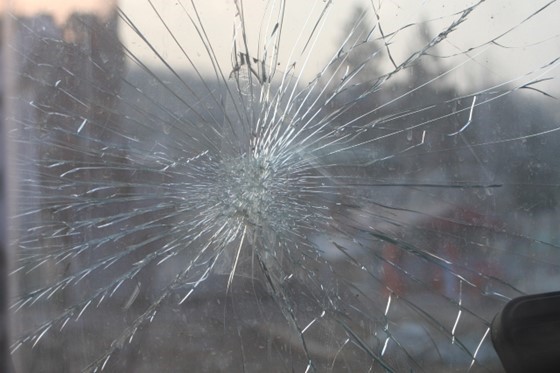 A windshield is an integral part of the structural strength of the vehicle. It offers not only protection from the outside elements but also acts as a protective layer for the occupants inside against flying debris.
A windshield is an integral part of the structural strength of the vehicle. It offers not only protection from the outside elements but also acts as a protective layer for the occupants inside against flying debris.
In the event of a crash or rollover accident, the windshield supports the roof, thereby preventing passengers from being thrown from the vehicle.
Your vehicle’s windshield must always remain robust for the prevention of serious injury or damage to your car. A chip or a crack can also impair the driver’s line of vision of the road ahead, which in itself is a danger to you and your passengers.
Here’s what causes windshields to crack and chip.
1. Structural Weakness in windshield
Windshields play a critical role in a vehicle’s safety system. If the quality of the glass is compromised in the manufacturing process, structural pressure can cause it to crack, especially along the perimeter. The edges of the shield are often prone to breakage.
You might think that repairing a chip is a simple repair job. However, that is far from the truth if you ignore it for a length of time. It also depends on the size of the chip, the position, and the severity. Even the smallest windshield chip can quickly turn into cracks, and that can happen when you least expect it.
If this occurs when you are driving, it could lead to greater safety concerns and more expense. Have an expert check the shield’s structural integrity if you can’t remember when you last had it looked at.
2. Extreme Cold
A shield expanding and contracting due to extreme changes in the ambient temperatures can cause a minor chip to change to a crack.
When the skies open up and hail the size of golf balls fall down, some unlucky motorist is going to experience the chipping or cracking of their glass. Fortunately, modern cars are fitted with tough windscreen glazing.
However, when the sky goes dark, the wind starts to howl, and ice chunks hit your car, they can shatter your glass. Sometimes it is unavoidable.
Tip: Never pour hot water on your windshield to defrost an icy windscreen. The sudden change in temperature causes the windscreen to expand, and this causes cracks which could mean a whole window replacement.
3. Direct Sunlight on windshield
Intense heat can cause the windscreen to fracture from expanding or contracting, necessitating emergency windscreen repairs, and distort the shaped glass.
Tip: Parking your car in the shade or placing a sunshade inside the car that covers the entire windscreen could prevent the excessive heat from damaging your glass.
4. Stones And Road Debris
Stone chips: the most common cause of windshield damage. High speeds on the motorway also mean that any debris on the road can become airborne and smash into the windscreen at a high velocity.
Covering the chip with a piece of clear packing tape to keep the dirt out of the glass will help until you can schedule a repair.
Tip 1: It’s always advisable to leave a sufficient gap between you and the vehicle in front of you to prevent stones from being thrown up from the rear wheels.
Tip 2: Don’t use your wipers until the repair has been effected.
5. Wipers Can Damage Your Windscreen
If your wiper blades are worn down and brittle, the metal edge of the wiper is exposed and will scratch the glass. An existing chip will be further damaged and could lead to a crack when the wipers are activated.
Tip: It is advisable to get your wipers replaced at least every six months. A niche marketplace like windshieldwipers.com should help you compare and find the best-fitting set of wipers.
Seek Expert Advice
It’s always advisable to act sooner rather than later. Windshield chip repair specialists have the skills and experience to assess the damage to your windscreen. Together with the right tools and materials, the job will be done expertly and efficiently.










